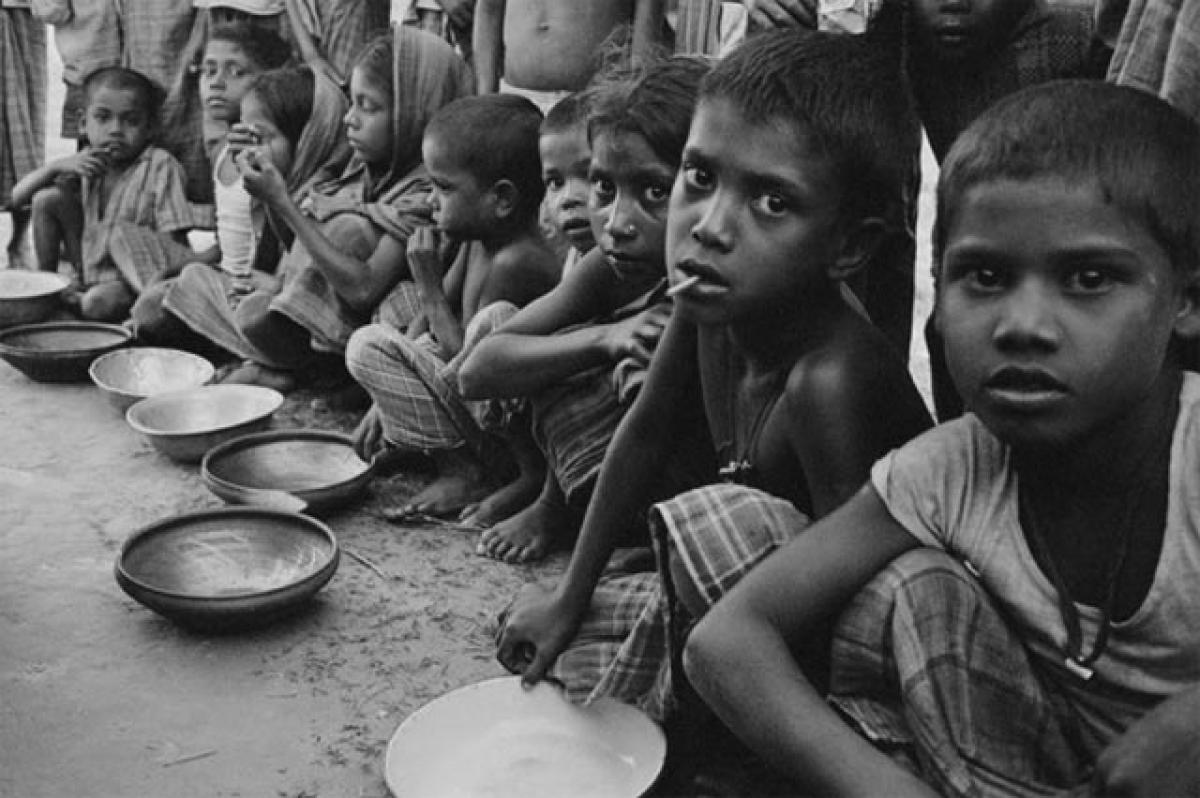Live
- 'Chintan Shivir' in Hyd to draft roadmap for 2028 Olympics
- Dy CM Bhatti lays foundation stone for road expansion
- HYDRA boss inspects lakes at Khajaguda, Ibrahimbagh
- Know about Acharya Indravarman and Most trusted astrologers on the List of Top 10 Best Astrologers in India
- Search Operation Begins for Missing Workers in SLBC Tunnel
- The Unstoppable Artistic Odyssey of Yasmin Sawhney
- Raghavendra Swami’s 430th birth anniversary celebrated
- Ensure smooth arrangements: Collector
- Cong will give return gift: Sridhar Babu to Bandi
- Nellore: Police conduct ‘Open House’
Just In

It may seem like a no-brainer to say that we need data to guide efforts to end malnutrition.
It may seem like a no-brainer to say that we need data to guide efforts to end malnutrition. Would you run an economy without a regular stream of credible data? You'd be flying blind if you did, and we know what happens if you try to do that. And yet this is precisely the situation that those trying to end malnutrition in India find themselves in.
Until the Rapid Survey on Children (RSOC) data from 2013-14, seven years had elapsed since the last nationally representative nutrition survey, the third National Family Health Survey (NFHS 3). We hear that NFHS 4, the next big government survey, is in the field and we very much hope it will be out by 2018. If it is, that will be a gap of five years since the RSOC.
Why is data important? As the 2016 Global Nutrition Report reminds us, it is important because it tells us which types of malnutrition are being reduced and how fast that is happening. What type of data is critical? There are at least five. First, we need to know the extent of malnutrition: Where it is and how fast it is (hopefully) decreasing.
In India, based on the RSOC data and the Global Nutrition Report, the speed of decline in stunting rates has improved as has the speed of improvement in exclusive breastfeeding rates and this is great news. But the rate of wasting of under-five's remains high at 15.1 per cent, adult diabetes rates are increasing and are currently 9.5 per cent and women's anaemia rates are essentially static at 48.1 per cent, one of the world's worst (170th out of 185; China and Brazil are under 20 per cent, Sri Lanka is 26 per cent and Nepal is 36 per cent).
Data tells us where to apply the accelerator, where to try to apply the brakes and when to turn to different priorities. Second, we need to know whether high-impact nutrition interventions are reaching the people they are supposed to reach. Third, we need to know more about how well certain sectors are doing in supporting nutrition improvement.
Public distribution systems that use micronutrient-rich foods are more nutrition-sensitive than ones that do not. Water and sanitation programmes that have a child-centred focus are more nutrition-sensitive than those that do not. Cash-transfer programmes that incorporate some behaviour change communication work around nutrition will be more nutrition-sensitive than those that do not.
The only way to assess the nutrition-sensitivity of these sectors is to go through the national and state and district budgets as NITI Aayog member Bibek Debroy recently said - line by line, and designate certain line items, say, 0, 25, 50, 75 and 100 per cent allocations to nutrition. If they are fully nutrition-sensitive they will be given a 100 per cent weight. If they are not nutrition-sensitive at all they will score zero per cent. The challenge is to increase the overall percentage allocated to nutrition. To meet that challenge, we need data.
Fourth, we need the first three types of data at the state and sub-state levels. To guide action and promote everyday accountability, we need more disaggregated data.Fifth, we need to know what works. If we don't know whether a nutrition programme actually works, where it works, for whom it works, why it works and how it works, then we are, again, flying blind, wasting resources and acting irresponsibly.
While the costs of evaluating interventions are not trivial, as the 2014 Global Nutrition Report showed, the benefit-cost ratios of identifying and scaling up the interventions that work to prevent malnutrition are huge: Over 34 to 1 for India.
The signing of the Sustainable Development Goals by the Indian government provides the perfect opportunity for India to develop its own dashboard of nutrition indicators one that is linked to specific, measurable, achievable, relevant and time-bound (SMART) targets.
A government that stands up and allows itself to be counted on nutrition is a government whose bravery will be rewarded by an incredible legacy – the ending of malnutrition by 2030. (In arrangement with IndiaSpend.org)
By Lawrence Haddad

© 2025 Hyderabad Media House Limited/The Hans India. All rights reserved. Powered by hocalwire.com







